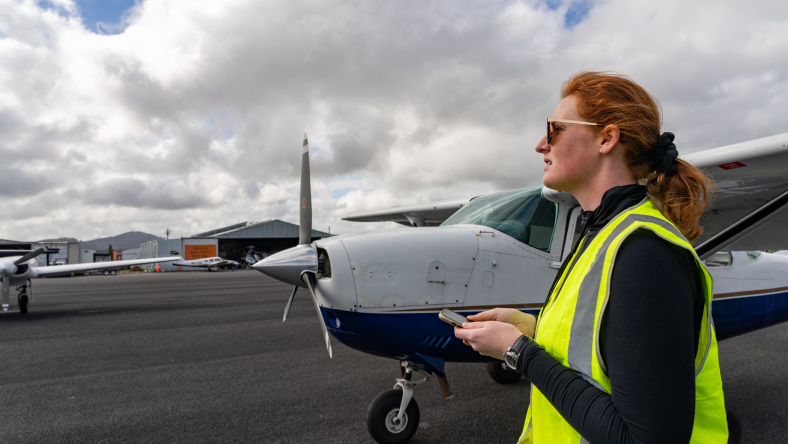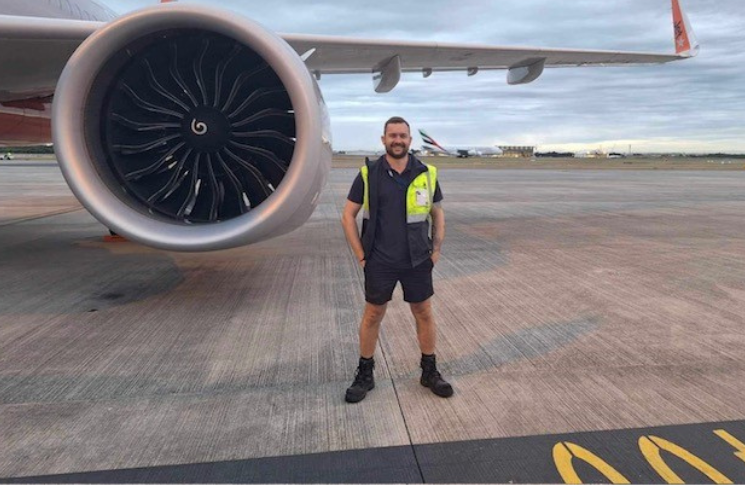Last month the pilot of a Piper PA-28 departed an airport in regional NSW bound for a destination on the coast, a flight which would take them over national parks with wooded, mountainous terrain.
However, as they were passing through the mountains, the cloud ceiling began to lower as the terrain became higher.
‘Knowing the weather at my destination from weather cameras, I decided to continue following the valley as reference,’ the pilot later reported to the Australian Transport Safety Bureau (ATSB).
‘This caused the aircraft to become trapped within the valley with surrounding cloud on either side.
‘As the cloud passed through it became lower, causing the aircraft to enter IMC. Due to the surrounding mountains, I was unable to turn around, so I declared a PAN. ATC then helped give traffic advice and a lowest safe altitude to climb above.
‘Shortly afterwards I was back in VMC on top of the cloud at roughly 3,000 feet and I descended through a gap and maintained VMC for the rest of the flight to land safely at my destination.’
Fortunately, in this case, with the timely assistance of ATC the pilot was able to exit IMC and land safely. But the risk of adverse consequences after entering IMC, without the training and flying an aircraft equipped to do so, is very real.
‘The ATSB’s database of aviation safety occurrences shows that about one in ten VFR into IMC events result in a fatal accident,’ ATSB Director Transport Safety Stuart Macleod says.
‘For visual pilots, pressing on where there is the possibility of entering IMC carries a significant risk of spatial disorientation, where the brain receives conflicting or ambiguous information from the sensory systems, resulting in confusion, incorrect control inputs and loss of control of the aircraft.
‘That is why we encourage all pilots, no matter your experience level, to develop the knowledge and skills required to avoid unintentional entry into IMC.
‘Have alternate plans in case of unexpected changes in weather, and make an early decision to turn back, divert or hold in an area of good weather.
‘And use a personal minimums checklist to help manage your flight risks.’
A personal minimums checklist is your own set of rules and criteria for deciding whether, and under what conditions, to depart, or continue flying, based on your knowledge, skills and experience. As a personal ‘go/no go’ checklist, it can help take the stress out of difficult decisions both before and during flight.
‘If you don’t hold a current instrument rating, you should always be prepared to amend and delay plans to fly due to poor or deteriorating weather conditions, and not to push on,’ Macleod says.
‘Thorough pre-flight preparation is the best defence against flying into deteriorating weather.’
Weather and forecasting is one of the special topics on the CASA pilot safety hub.
Read the ATSB’s ‘Avoidable Accidents’ publication: Accidents involving Visual Flight Rules pilots in Instrument Meteorological Conditions | ATSB






Does Bureau of Meteorology get its Weather Forecast or Terminal Forecast from cameras?
Why not just stick to official Weather Forecast or Terminal Forecast, paying particular attention to FM, BECMG, INTER, TEMPO and PROB.
There was a CFIT accident in Tasmania, in a multiengine aeroplane that got caught beneath the weather in mountainous terrain . . .
How many weather related or inadvertent IMC accidents does it take before pilots make the right decision early to divert or turn back. There is zero excuse to press on up a valley, when cloud bases obscure the top of mountains and you cannot see sunshine at the other end of the valley.
Also to be considered, powerlines often cross valleys, with the poles on either side or on the mountain and, there could be an aircraft flying opposite direction whose pilot had the same idea.
When the weather begins to close in, reduce the aircraft speed and extend the flaps to reduce stall speed, if flying an aeroplane, or reduce speed in a helicopter. Again, make your decision early to divert or turn back.
I surely would not hurt to get some Instrument instruction to maintain control of the aircraft by reference to instruments, even if the aircraft is only equipped with an Altimeter, VSI, Airspeed Indicator, Turn and Slip Indicator and Compass. With those few instruments you can control the aircraft in all axes, if the power is set for the configuration and level flight, the aircraft in trim. And, if you inadvertently fly into IMC, immediately get on instruments and believe what the instruments are telling you and ignore what you think the aircraft is doing. It takes not more than 178 seconds to become disoriented and lose control of the aircraft.
Rather than flying down the centre of the valley, it would be wiser to fly along one side, just in case you need the turning radius to make a 180 degree turn.
Lastly, refer to this “Flight Safety Australia” article:
https://www.flightsafetyaustralia.com/2016/01/178-seconds-to-live-vfr-into-imc/
https://www.flightsafetyaustralia.com/2020/10/not-my-time-to-die/
Clarifying Note: “The Bureau of Meteorology’s Aviation Weather Service provides aviation users with meteorological information necessary for safe and efficient civil aviation operations. The service includes the provision of observations, forecasts, warnings and advisories, and is provided within the technical and regulatory framework of the International Civil Aviation Organisation (ICAO) and the World Meteorological Organisation (WMO).”
“Airservices Australia is the designated authority for the delivery of aviation meteorological information to aviation industry users.”